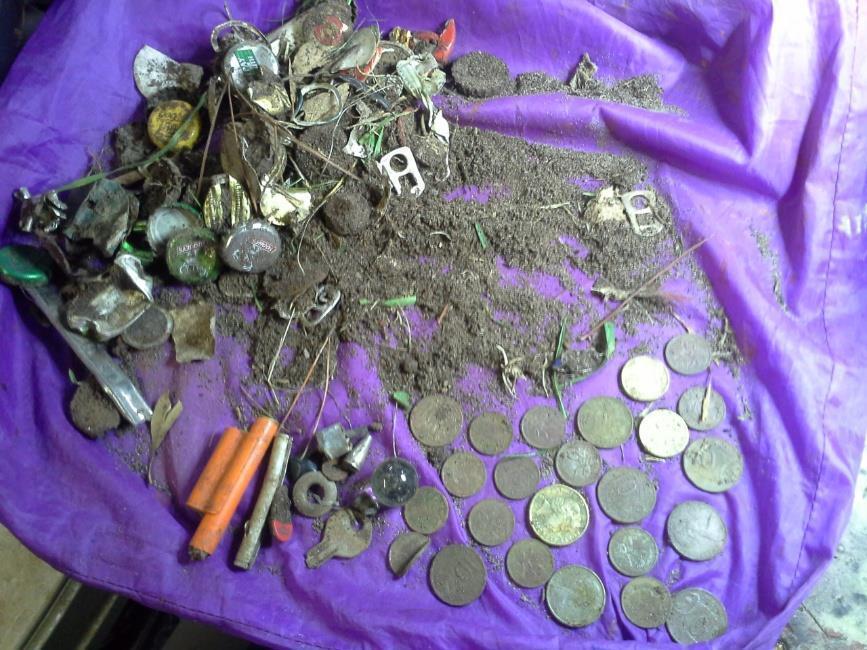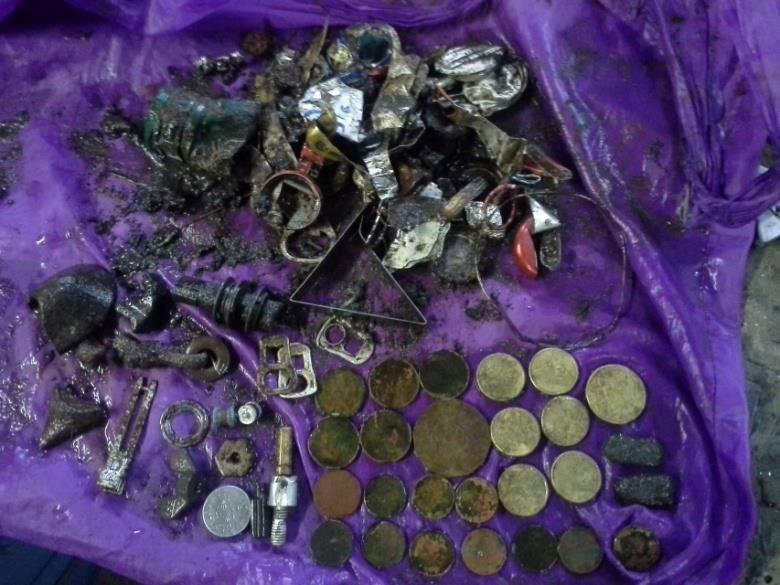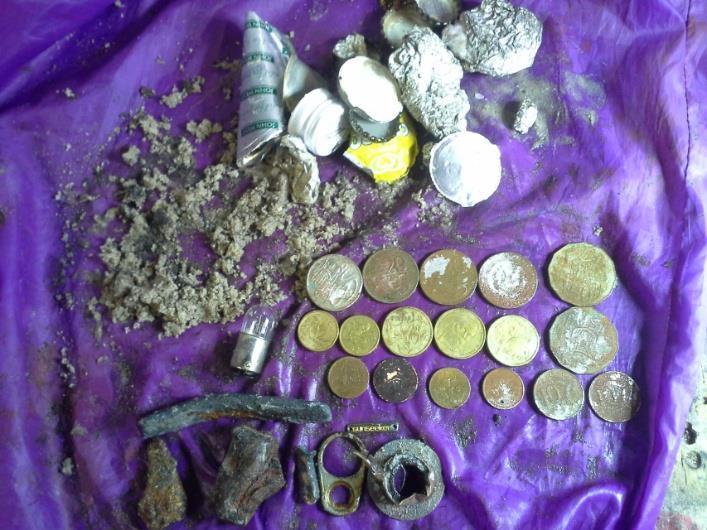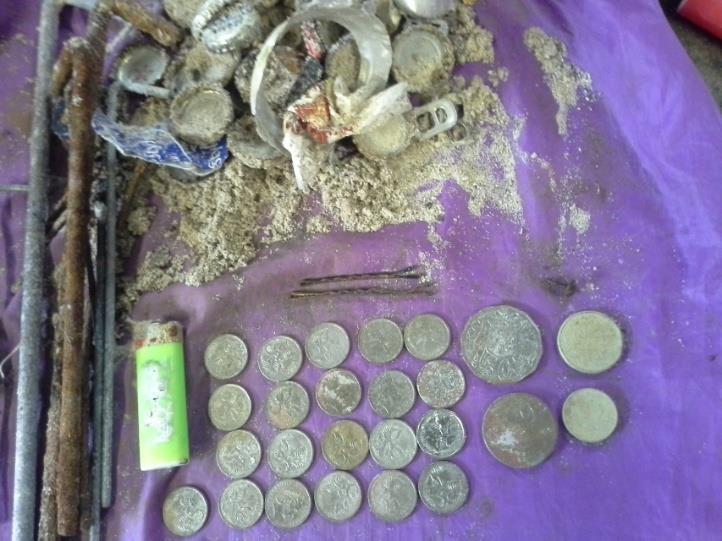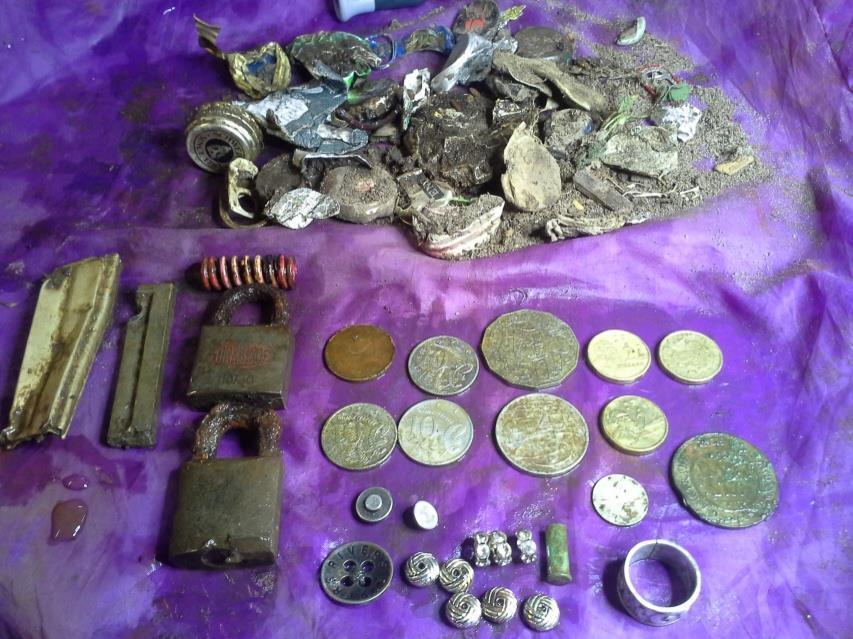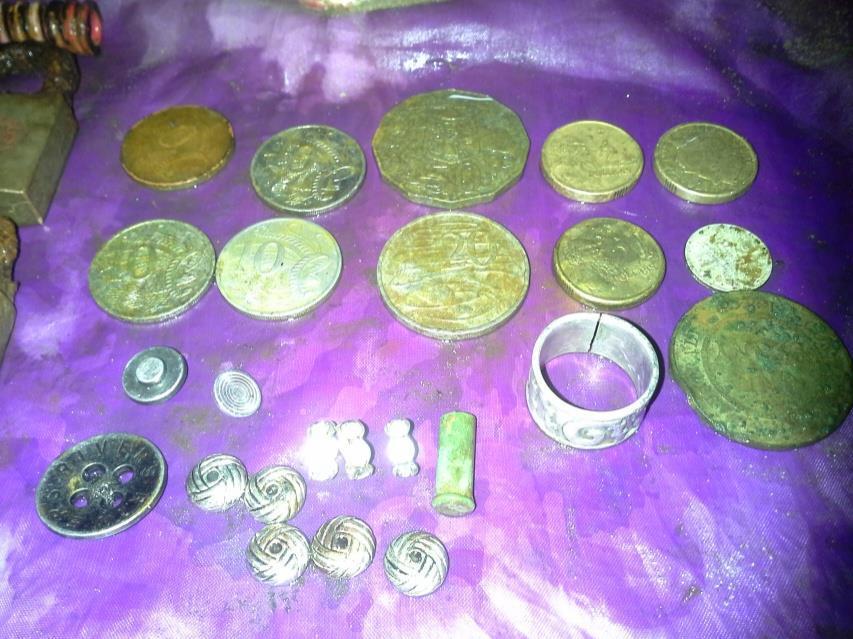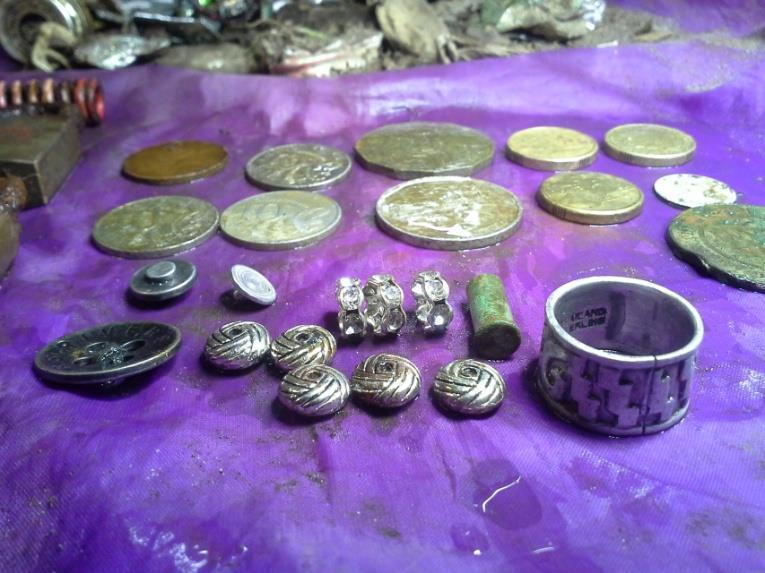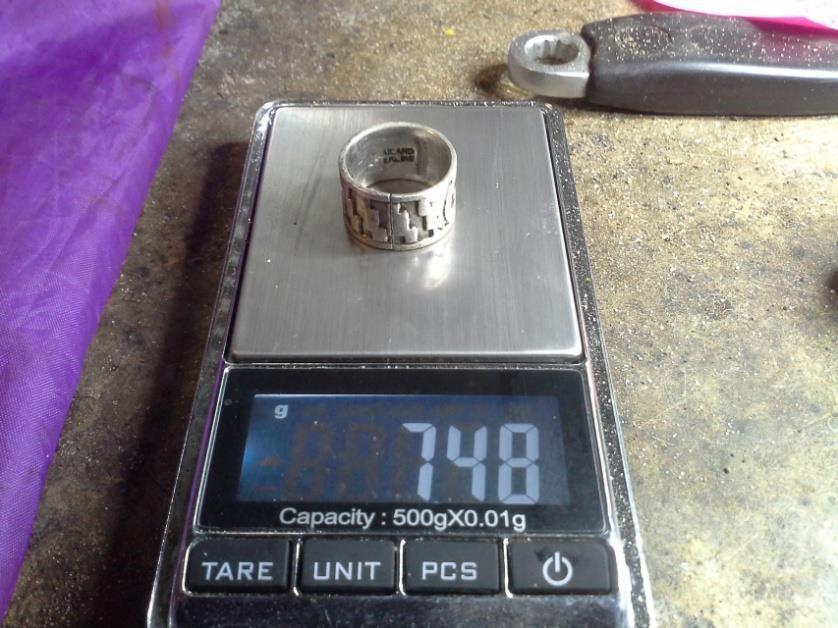I'm using the Ace 250, and I'm not going too deep, mainly aiming for screwdriver accessible depths, so usually run with the sensitivity back a few notches - running the large DD coil. I did try around the perimeterof the tot lots, and found a couple of coins, but really have to go back and clean the place out properly, have been systematically gridding the area up. I am aiming to upgrade probably to a Sovereign in the future, mainly as it can be used for the beach as well.
I took the Ace 250 back down to the beach tonight, but was presented with a eroded beach totally covered in seaweed, so I packed up and headed north to another beach with significant erosion from the latest bout of rough weather to give it a go. It took a while to get my eye in on this beach, the tide had pretty much run righ up to the sand hills, leaving a nice line of exposed shell grit and stones about halfway down the beach. I followed this for a while, and it started to produce coins, so I did a few runs back and forth to see where the coins were mainly occurring. You could pretty much stick to a narrow route all the way down the beach, flicking coins up every 20-30m, really needed some more time as I could have spent all night there, and would have come up with a decent haul.
Also would have preferred to use the Infinium for increased depth, as the sand was still a bit damp, resulting in the Ace having to run on about 4-5 bars of sensitivity. Unfortunately, the infinium is out of action for now waiting for repairs to the coil plug on the control box.
Coins of interest were a Henry Parkes $1, International year of the volunteer 20c, and a Thai 1Baht. Also picked up 210 grams of lead! Not too much rubbish this time thankfully, all the goldies rung up as nice clear bell tones, and the rest as repeatable, solid single tones.

 Thinking I might have to look at a Whites TRX, with the provided lanyard loop, it should stay put, considering I don't have a very good track record when it comes to losing detecting gear. :/
Thinking I might have to look at a Whites TRX, with the provided lanyard loop, it should stay put, considering I don't have a very good track record when it comes to losing detecting gear. :/ 